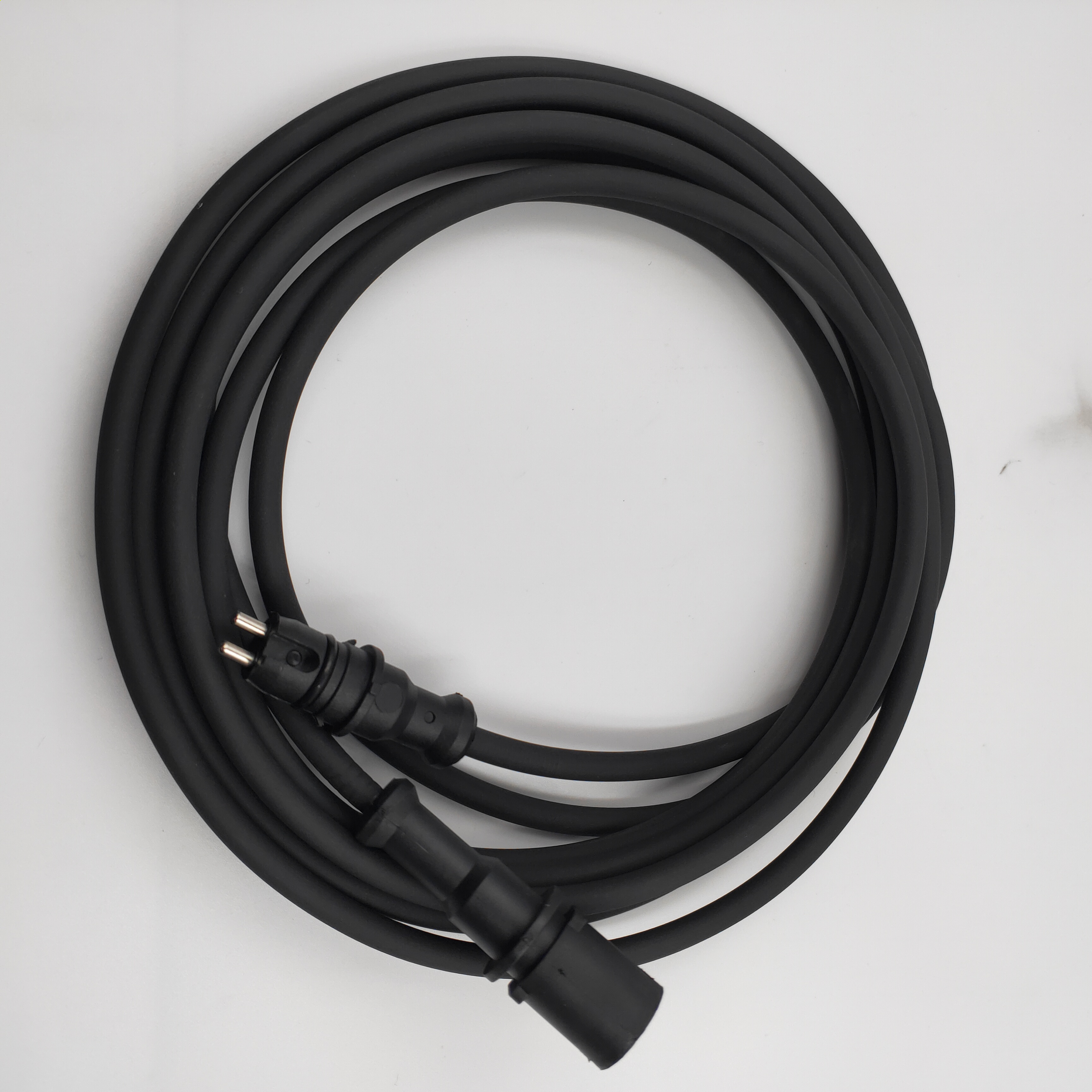
Strategic Truck Parts Sourcing for Operational Efficiency
The modern commercial vehicle industry is fundamentally driven by operational continuity, where fleet efficiency stands as a critical determinant of financial success. Any period of unscheduled vehicle downtime directly translates into lost revenue, compounding fixed costs, and the risk of contractual penalties. Consequently, the strategic procurement of replacement components has transcended a simple purchasing function to become a core element of a fleet’s profitability. This necessity compels fleet managers to move away from complex, multi vendor sourcing toward unified supply solutions that offer guaranteed quality assurance and streamlined logistics. This strategic pivot underscores the powerful advantage of an integrated, factory direct supply chain model, engineered to boost vehicle availability, reduce the Total Cost of Ownership, and secure the absolute reliability of every installed component.
Simplifying Fleet Logistics
The inherent complexity involved in maintaining a diverse fleet of commercial vehicles is dramatically amplified when components are sourced from multiple independent suppliers. The one stop solution paradigm specifically addresses this issue by consolidating the sourcing of all necessary heavy vehicle components into a single, accountable entity.
This approach delivers significant operational benefits:
- Reduces administrative overhead by eliminating the substantial time and labor costs associated with managing dozens of vendor relationships, disparate purchase orders, and numerous invoices.
- Enhances technical compatibility. Sourcing all parts from a single partner guarantees that interrelated systems are designed and manufactured for perfect fitment, preventing the cascading failures that can result from mismatched components. For instance, the cohesion between major axles and their corresponding bearings is assured, optimizing performance.
- Streamlines inventory management. This dependable, consolidated supply facilitates a near Just in Time approach, replacing costly "just in case" inventory models. This efficiency leverages faster lead times and reliable part availability to maintain a significantly higher rate of vehicle availability across the entire fleet.
By consolidating procurement for diverse systems, from brake drums and brake discs to the complex components of the drivetrain such as u joints and camshafts, this model transforms logistical complexity into operational simplicity.
Efficiency in the Supply Chain
An integrated global supply chain is essential for achieving the dual objectives of cost efficiency and responsiveness in the heavy truck parts market. Operating manufacturing and distribution across various countries enables a company to leverage worldwide economic efficiencies while proactively mitigating regional supply risks.
Key logistical advantages of this model include:
- Eliminating intermediaries. Direct international operations remove multiple layers of brokers and distributors. This disintermediation reduces the component's acquisition cost, translating directly into the competitive advantage of factory direct prices.
- Enhancing speed and resilience. A globally connected network facilitates rapid inventory fulfillment and distribution, ensuring essential components reach their destination with remarkable speed. This quick delivery capability is vital for managing emergency repairs.
- Localized support. Strategic global locations ensure that support is available across time zones, minimizing delays for critical supply needs and allowing for timely delivery of high demand items like various filters and bulk motor oils.
- Mitigating risk. By coordinating supply across continents, the system can proactively manage potential disruptions, from international freight congestion to material shortages for parts like specific diaphragm & seals or body parts.
This strategic agility ensures continuous access to a vast inventory, safeguarding against the production halts and service delays that typically cripple fleets relying on less integrated supply networks.
The Factory Direct Model and Total Cost of Ownership
The economic benefits of the factory direct model extend well beyond the appeal of lower initial purchasing figures, serving as a powerful mechanism for achieving a lower Total Cost of Ownership (TCO). While attractive factory direct prices are the starting point, the most substantial savings are realized through the component’s prolonged operational lifespan and proven reliability.
TCO analysis for commercial vehicles must integrate three financial pillars: acquisition cost, maintenance labor cost, and the immense cost of risk associated with vehicle downtime. A component with a superior Expected Lifespan and Reliability is critical to this equation.
- Superior Quality Control: Direct manufacturing ensures absolute control over material quality and precise manufacturing tolerances, factors that are crucial for high stress parts like heavy duty transmissions or performance critical turbo charger units.
- Reduced Unscheduled Downtime: High quality minimizes the likelihood of unscheduled mechanical failures, thereby reducing expensive emergency labor and recovery expenses.
- Minimized Risk Cost: The elimination of unplanned downtime, which includes lost revenue opportunities and the continued accrual of fixed operating costs, is the single most significant financial benefit provided by factory direct components.
By focusing on superior quality for parts like specialized clutches and structural assemblies such as the fifth wheel, strategic sourcing secures the most cost effective, reliable operational asset, rather than simply the cheapest component.
Quality Assurance and Warranty
The direct connection between manufacturing operations and quality control establishes a framework of absolute accountability and engineering excellence. When a component supplier operates the entire factory, it can rigorously implement and enforce stringent quality assurance (QA) protocols across every stage of the production lifecycle.
This process is anchored by specific technical mechanisms:
- Adherence to ISO/TS16949: This global standard acts as the blueprint for comprehensive QA, dictating continuous process monitoring and strict adherence to performance specifications.
- Advanced Engineering Oversight: Advanced engineers continuously monitor the production line, focusing on proactive defect prevention and continuous improvement, rather than merely final product inspection.
- Guaranteed Confidence: This technical mastery allows the company to offer a comprehensive warranty, a critical risk mitigation tool for any fleet operator. The warranty provided on major components like the fifth wheel assembly or modern e vehicle parts is a clear statement about the product's long term integrity and engineering foresight.
Rigorous quality control also applies to smaller, safety critical elements such as various control valves and solenoids, guaranteeing system cohesion and maintaining peak performance across the entire vehicle platform.
A Foundation for Operational Integrity

The scope of a successful one stop solution must be broad enough to cover the entirety of a commercial vehicle's complex infrastructure, ensuring that every function is supported by compatible, high quality components. The comprehensive inventory is critical for improving both repair efficiency and long term reliability across a diverse fleet.
The inventory covers every major system, including:
- Braking Systems: The comprehensive range includes components for air breaks and abs breaks, along with mechanical assemblies like brake calipers & kits, friction materials like brake shoes, linings & kits, and control elements such as various brake valves and automated mechanisms like slack adjusters. Critical air system components, including air dryers and complete air & electric coils, are supplied together, ensuring proper pressure management.
- Drivetrain and Chassis: This category covers high wear components and major structural elements, including universal u joints, robust clutches, specialized center supports, and the necessary hardware kits. Suspension needs are covered by various air springs and other suspension parts.
- Visibility and Power: Supporting the driver and the vehicle’s electrical functions are light & bulbs, mirrors, and wipers, along with the full range of modern electric & electrical parts needed for diagnostics. The parts list extends to minor components like light duty brake shoes and essential engine parts.
This level of inventory breadth, from simple doors to the complex hydraulics of a brake expander wheel, demonstrates a technical capacity and manufacturing scale achieved only by entities fully committed to global standards and engineering mastery. Such a commitment to operational and technical excellence is precisely what defines a true strategic partner in heavy vehicle management.
All Truck Parts: For Your OEM and Aftermarket Truck Part Needs
Achieving the necessary scale to offer such a wide range of consistently high quality components is a feat of both engineering and logistics. This specific level of operational and technical mastery is what defines All Truck Parts Limited (ATP).
With a distinguished history spanning more than two decades, ATP has established itself as a cornerstone component manufacturer in the heavy duty transport sector. The firm's fundamental commitment to advancing road safety and operational longevity is validated by its rigorous adherence to the ISO/TS16949 quality certification, which governs all processes and production standards.
ATP provides comprehensive solutions for commercial vehicles globally:
- Core Offerings: The company functions as a global one stop solution supplier, offering a complete inventory that supports the maintenance and repair of major commercial truck and trailer parts, including wheels, tires, and all forms of body parts.
- Technical Expertise: Utilizing a dedicated team of advanced engineers, the firm provides specialized component services, including customized design, OEM, and ODM capabilities, ensuring absolute compatibility for specific fleet requirements.
- Economic Value: By owning and operating the entire supply chain, ATP provides genuine factory direct prices to its clients. This is combined with a full warranty on all components and a highly efficient logistical system to ensure quick delivery worldwide.
- Global Reach: Operational capacity is maintained through a global footprint, including strategically located offices across America, Europe, Africa, Australia, and China, enabling unparalleled service and immediate supply chain responsiveness for clients across different regions.
This integrated business model ensures that clients receive not only the required parts, but also the confidence that every component is engineered for reliability, safety, and a demonstrably lower Total Cost of Ownership.
Conclusion
The strategic sourcing of truck components is no longer a transactional matter but a critical function for competitive fleet operation. The integrated model, characterized by its one stop solution breadth and its factory direct prices, stands as the clear standard for maximizing profitability. This methodology eliminates logistical drag and administrative complexity while simultaneously embedding certified, engineer backed quality into the core of every operation. The assurance of consistent, reliable components, from air dryers to brake drums, backed by a comprehensive warranty and the global capability for quick delivery, secures the highest possible rate of vehicle uptime. Ultimately, partnering with a supplier capable of this degree of integration is not just a cost saving measure; it is a foundational strategy for achieving sustainable operational excellence and long term success in the transport industry.




